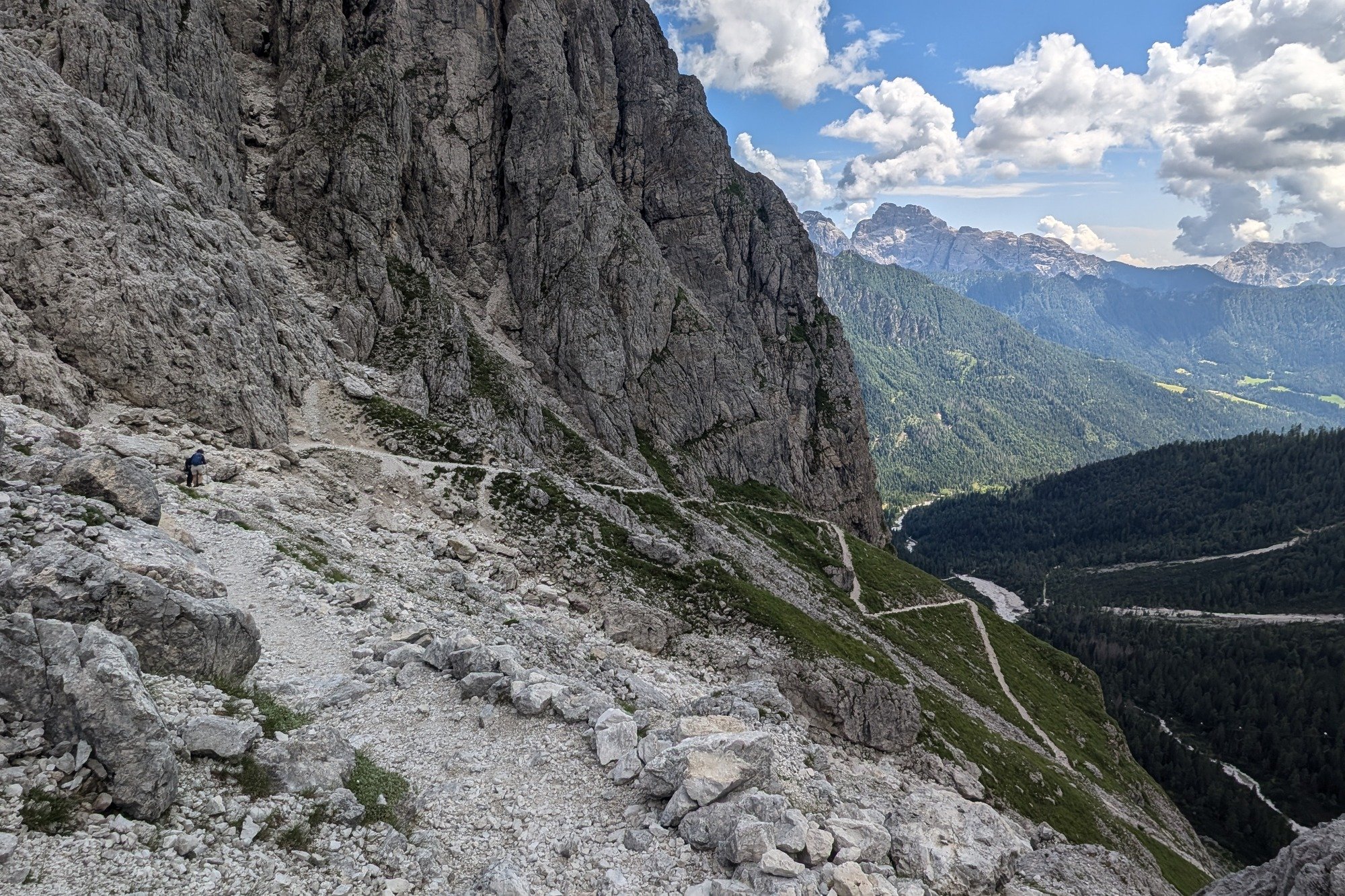There are three general hiking trail types in the Italy; Hiker Trails, Experienced Hiker Trails and Experienced and Equipped Hiker Trails.
How are you with heights and exposure? Do you bounce over boulders like an Ibex or prefer to stay in the green alpine meadows when given the choice?
Within our planning app, we use the Italian Alpine Club (SAC) hiking grades to determine the trail classification. It’s important to know what type of terrain you feel comfortable with so that you can plan a trip that is challenging but not too far out of your comfort zone.
Example of Italian hiking trail signs
Hiker Trails (E): Moderate slopes and generally solid trail tread. They are often well maintained: walkers find cairns (a cairn is an artificial pile of stones erected as landmarks) or signs painted on rocks or trees to indicate the right way. Specific hiking gear, orienteering abilities and long walk training are required.
Experienced Hiker Trails (EE): Trails are often marked but orienteering skills are actually required: routes usually encounter slippery grassy slopes, short sections of scree (small loose rocks on average angle slopes). Rock outcrops can usually be negotiated without the use of hands, but sometimes hikers could have to climb short rock bands requiring use of hands.
Scrambling does not usually require specialized climbing equipment or skills, but hikers can meet with short and easy equipped stretches of trail. Alpine experience, firm and steady step are required. Hikers may also be exposed to heights and have to be trained for a whole day walk.
Experienced and Equipped Hiker Trails (EEA): Mountain routes which are equipped with fixed cables, stemples, ladders, and bridges. The use of these aids allows otherwise isolated routes to be joined to create longer routes which are accessible to people with a wide range of climbing abilities. Walkers and climbers can follow via ferratas with no need to use their own ropes and belays, and without the risks associated with unprotected scrambling and climbing (via ferrata).














